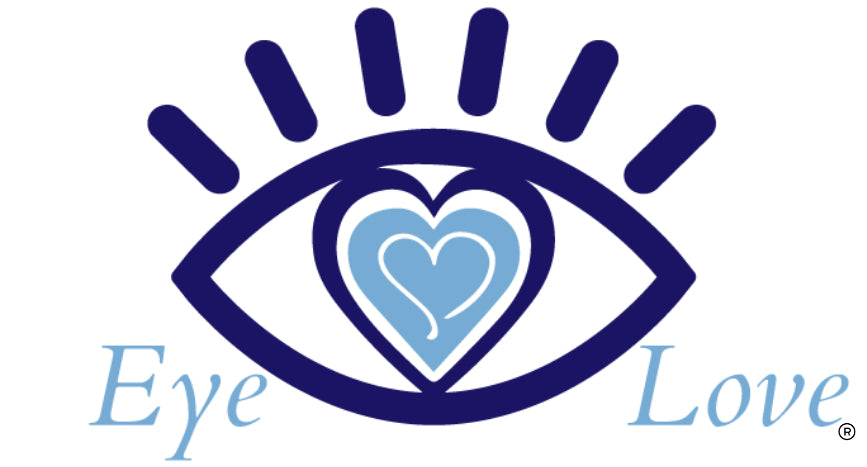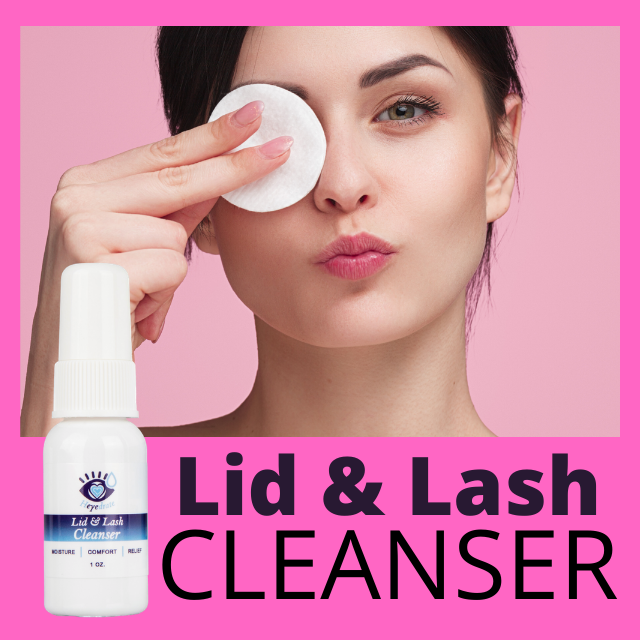Best Mascara for Dry, Irritated Eyes and Other Makeup Tips with Dr. Leslie O'Dell
After working in an ophthalmology office handling post-cataract and refractive surgery patients, Dr. Leslie O’Dell became interested in those with dry, irritated eyes. A sufferer herself, she often found it challenging to ensure that patients were able to see well after these procedures and also remain comfortable. At that time, there was not much known about the condition, and Dr. O’Dell has since shaped her career around this difficult-to-treat diagnosis.
Early on, she began educating herself about the effects of makeup on the eyes, because this was an important topic to her and many of the women she saw suffering. Wasn’t there a way to both wear makeup and be comfortable? Her efforts in this area are seen in her work with other eye doctors in this arena, a movement which has taken a deep dive into makeup ingredients, the research in this disease, and has the ultimate goal of better educating sufferers about the cosmetics and other body care items that may be causing harm.
Unfortunately, the FDA does not properly regulate cosmetic ingredients in the US, so it’s important to be aware (both as a doctor and a patient) of which chemicals to avoid.
Makeup Chemicals to Avoid
In the US, there are only 11 chemicals that have been banned in cosmetic products. In the EU, that number tops 1300. The following list continues to be researched and is constantly being added to, but it’s a great start in determining whether or not your makeup is a problem.
Alcohol
Often in makeup removers and lotions, alcohol can be very drying for the eyes.
Argireline (Acetyl Hexapeptide-3)
This is a scary chemical, and it’s one that beauty counters will be very happy to share with you. It’s often available in under eye creams and concealers. While it does an amazing job at removing fine lines and undereye bags in the short term, this is a neurotoxin that needs to be avoided.
Benzalkonium Chloride (BAK)
This is a common preservative that should be avoided in eye drops, but it can also be used in makeup in much higher quantities. It can contribute to corneal conditions as well as destruction of meibomian glands, and it may even be present in eye makeup removers that claim to be “for sensitive eyes”.
Formaldehyde
This is a preservative (most commonly used in embalming fluid), and there is some research that shows that this can be destructive to meibomian glands. It can also lead to hair loss (think eyelash dropout). This chemical also goes by other names, such as Quaternium-15, which was present in baby shampoo at one point.
Isopropyl Cloprostenate
Prostaglandin analogs are most commonly used in eye pressure lowering medications but have recently been used in eyelash growth serums. This chemical is a synthetic prostaglandin, which is proinflammatory and horrible for irritated eyes. Common symptoms are red eyes and eyelids, pigment changes which add to dark circles around your eyes, and a decrease in fat around the eyes (which causes a permanent hollowed-out look to the eyes). Destruction of the meibomian glands is also possible with this chemical.
Another quick note on lash growth serums and even eyelash extensions is that our bodies were designed to work perfectly. When you disrupt the natural lid to lash ratio, by lengthening your lashes, this decreases their ability to deflect wind, debris, and allergens. This creates a wind tunnel effect and can increase your risk of ocular allergies and dryness.
Parabens
There is a ton of research on parabens, which are one of many carcinogens. They’re also hormone disruptors and neurotoxins, and they change the way your body functions.
Phenoxyethanol
Another preservative, phenoxyethanol is often put in place of parabens, but there is concern for this chemical harming the meibomian glands.
Retinol
The topical form of vitamin A, this is best known as the anti-ager because it’s often used for wrinkles and crow’s feet. However, putting this by your eyes can be harmful to the glands of the eyelids. Once they’re atrophied, there is not much that can be done.
Sodium Laureth Sulfates
This is typically in face wash, and it allows the soap to suds up. Even those who don’t wear makeup should be vigilant about looking for this ingredient in their face washes, body care, and other household items (like toothpaste and floor cleaner).
Vitamin A
High doses of Vitamin A can be devastating to the meibomian glands.
Other Beauty Blunders to Avoid
Waterlining or Tightlining
When using eyeliner on the waterline of your eyelids, you are greatly affecting the meibomian glands. It is strongly recommended to avoid waterlining your eyelids because you are constantly covering up your meibomian gland openings with chemicals, including neurotoxins, waxes, and perfumes. By avoiding makeup application in this way, you can more easily decrease symptoms. In addition to this, choose eyeliner that contains ingredients known to be healthier for the eyes. For example, the new eyeliner from Eyes Are The Story is a great choice.
Failing to Remove Makeup
It is essential to thoroughly remove your makeup every single night. So many women simply forget this important step or wait until the morning to do it. This is a mistake because you’re exposing your ocular surface to chemicals and excess bacteria for longer periods than necessary.
Eyelash Extensions
This is a big trend, and eyelash extensions come in many forms. However, this alters the lid/lash ratio and when the lashes are longer, you’re at a greater risk of dryness issues. In addition to this, you can easily have sensitivities to formaldehyde-laden adhesives.
Eyelid Tattooing
This procedure is often used by athletes such as surfers or swimmers, but permanent eyeliner contains pigment which can shut down the meibomian glands and cause evaporative dryness.
Eyelash Tinting and Perming
Tinting or perming your eyelashes are procedures also becoming more common, and these make use of tons of chemicals in the process. Avoid these!
Eyeshadow Powder/Glitter
Try to avoid glitter or sparkle in your eyeshadows, and instead choose a cream-based eyeshadow. Glitter is made from rocks ground into powder, which could get into your eyes and cause scratches on your cornea.
Eyelash Growth Serum
Both over-the-counter and prescription, eyelash growth serums are to be avoided. Prostaglandins increase inflammation, which includes redness and pigment changes.
Sharing Makeup
This should go without saying, but you don’t want other people’s bacteria around your eyes.
Waterproof Eye Makeup
Waterproof makeup contains more chemicals that could be irritating to your eyes - the main offender is pine tar! You don’t want this around your eyes, so it’s best to avoid waterproof eyeliners and mascara.
How to Safely Wear Eye Makeup
There are quite a few things we’ve already mentioned above, but here are just a few tips for successfully wearing eye makeup when you have dry, sensitive eyes. First of all, sharpen your eyeliner pencils with each use to remove the outer shell. This will provide a clean pencil each time.
Replace your moist cosmetics monthly, including concealers, mascara, and eyeliner (among others). In addition to this, make sure to replace all makeup whenever you’re sick or have an eye infection. Thoroughly remove all makeup nightly, and be careful what you use. Removing makeup with soap and water can cause more eyelash dropout, so use a safe cleanser such as an oil-based one with minimal ingredients.
Lastly, regularly clean your makeup brushes. If you’re consistently using them and never wash them, they can become contaminated very easily. You can simply wash them with a mild soap and water, or spray them with hypochlorous acid, and then let them dry completely before using.
Safe, Natural Makeup Options
Below you’ll find recommendations for safer makeup brands. Many of these companies are helping to bring to light how antiquated the current FDA laws are, which is fantastic. Other resources you can use if you’re unsure about a chemical is the Think Dirty App and the EWG Skin Deep website.
Keep in mind that it’s still important to read labels on every cosmetic you purchase. Although the companies below are following healthier standards and more transparent labeling for sensitive eyes, this only ensures that there is science behind their makeup and the ocular surface. Just because something is organic and natural doesn’t mean it’s completely eye friendly, so follow the recommendations above when looking at your cosmetics.
What is the best mascara for sensitive eyes?
ÈyesAreTheStory.com is a great resource for clinically-tested formulas that were created through the lens of your eyes. This company has blacklisted toxic ingredients found in mainstream cosmetics and skincare. They not only embrace the safe beauty movement, but they're leading a new conversation about optimal eye protection and endocrine health, informed by a science-based platform. We love them because they develop highly effective products to bring out your boldest beauty without asking you to pay the ultimate price: your health. Click here to check out their mascara.
Keep in mind that mascara falls into a few basic categories including classic water-based and waterproof. Waterproof mascara is definitely worse for your eyes. Fiber lashes are also an option now, but these are even worse than waterproof because the small fibers can easily fall into the eyes and cause irritation. Problematic mascara ingredients may include isoparafins, polyvinylpyrrolidone resins, pigments, and stearic acid.
A few others to try include Lily Lolo, Omiana Barely There, and Zorah Length and Care.
What is the best eye makeup remover for sensitive eyes?
We believe that the best eye makeup remover is a natural one, but it also needs to be effective in removing stubborn makeup. Because oil dissolves oil, an oil-based cleanser is often the best option. Click here to check out our recommendation.
What is the best eyeliner for sensitive eyes?
Eyeliner is something that helps define our eyes and give us a more "awake" look, yet it can be especially problematic in certain cases. Eyeliners come in many forms including liquid, pencil, and gels. Those which you can sharpen away (such as pencils) or wipe away the outer layer before applying (such as twist-up pencils) tend to be safer because you're able to remove some of the bacteria that may be present. Ingredients that may be probematic include silicone resins such as trimethylsiloxysilicate and polymethylsilsesquioxane, pigments, and preservatives.
ÈyesAreTheStory.com has a nice, bold eyeliner available with clean ingredients in mind. Click here to learn more about their eyeliner. Also check out 100% Pure's brand of fruit-pigmented eyeliners, Alima Pure Natural Definition Eye Pencil, and Red Apple Lipstick Eyeliner.
Other brands to consider
Pharmaca, also found at Whole Foods
References:
American Academy of Optometry Lecture: I Can't Make This Up! by Dr. Tracy Doll
https://www.womeninoptometry.com/editorial/article/impact-of-makeup-on-the-ocular-surface-and-dry-eye-disease/
https://dryeyemaster.com/cosmetic-use-and-dry-eye/
https://www.academyeye.com/blog/is-my-eye-makeup-making-my-dry-eyes-worse
https://eyecareleaders.com/vampires-vanity-cosmetics-suck-life-dry-eye-patients/
AMAZON AFFILIATE INFORMATION
We, Eye Love, LLC, are a participant in the Amazon Services LLC Associates Program, an affiliate advertising program designed to provide a means for us to earn fees by linking to Amazon.com and affiliated sites. MediViz and Heyedrate branded products are made by our company, Eye Love, but we truly believe that our products are the best on the market! It is important to know that our products are not intended to diagnose, treat, cure, or prevent any disease.




